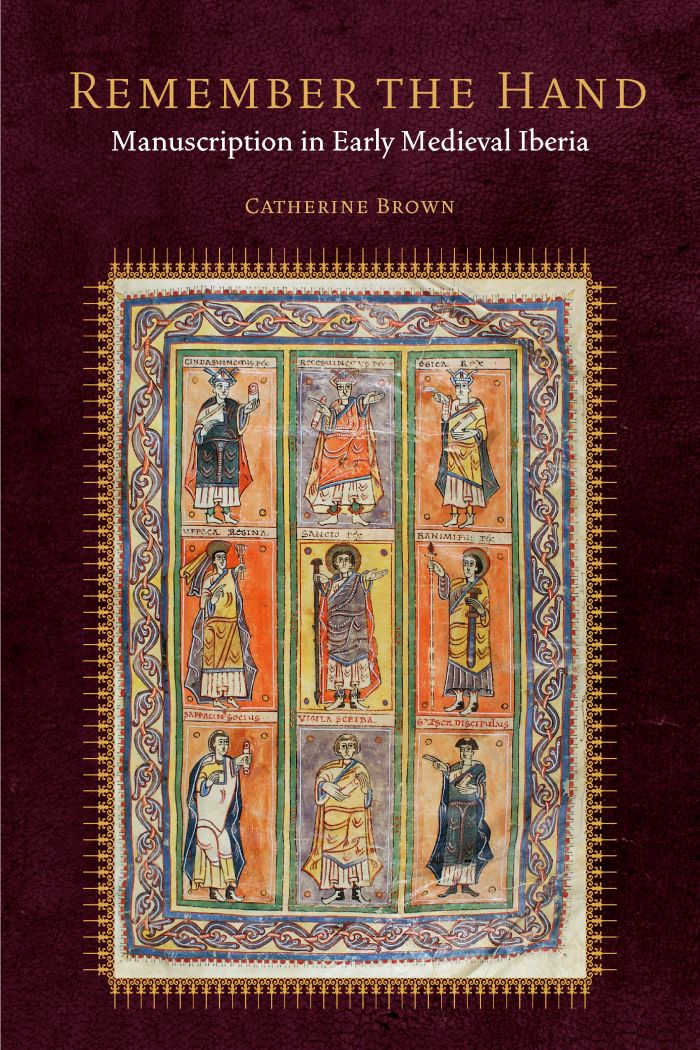Remember the Hand
Manuscription in Early Medieval Iberia

This book can be opened with

WINNER, KATHERINE SINGER KOVACS PRIZE
Remember the Hand studies a body of articulate manuscript books from the Christian monasteries of northern Iberia in the tenth and eleventh centuries. These exceptional, richly illuminated codices have in common an urgent sense of scribal presence—scribes name themselves, describe themselves, even paint their own portraits. While marginal notes, even biographical ones, are a common feature of medieval manuscripts, rarely do scribes make themselves so fully known. These writers address the reader directly, asking for prayers of intercession and sharing of themselves. They ask the reader to join them in not only acknowledging the labor of writing but also in theorizing it through analogy to agricultural work or textile production, tending a garden of knowledge, weaving a text out of words.
By mining this corpus of articulate codices (known to a school of Iberian codicologists, but virtually unstudied outside that community), Catherine Brown recovers these scribes’ understanding of reading as a powerful, intimate encounter between many parties—authors and their text, scribes and their pen, patrons and their art-object, readers and the words and images before their eyes—all mediated by the material object known as the book. By rendering that mediation conspicuous and reminding us of the labor that necessarily precedes that mediation, the scribes reach out to us across time with a simple but profound directive: Remember the hand.
Remember the Hand is available from the publisher on an open-access basis.
Remember the Hand is a unique scholarly achievement: at once erudite, theoretically daring, and a scholarly labor of love. It is sure to be read avidly in the many fields in which manuscript culture and the ethical and haptic nature of texts are of vital present concern: not only in medieval European art history and literary studies, and in the study of non-Western manuscript traditions, but also in fields such as history of religion, , anthropology, architecture, and media studies. —John Dagenais, University of California, Los Angeles
A smart and substantive study that is sure to make a profound impact across the disciplines and throughout all areas of medieval studies, this monograph is a pleasure to read. Enlightenment in the form of Catherine Brown’s Remember the Hand tastes like a feast.—Archivo Español de Arte
List of Abbreviations | ix
List of Figures | xi
List of Plates | xv
Preface | xvii
Introduction: The Articulate Codex, Manuscription, and Empathic Codicology | 1
1 Florentius’s Body | 11
2 Monks at Work: Grammatica and Contemplative Manuscription | 33
3 The Garden of Colophons | 64
4 Manu mea: Charters, Presence, and the Authority of Inscription | 92
5 Makers and the Inscribed Environment | 106
6 Remember Maius: The Library and the Tomb | 128
7 The Strange Time of Handwriting | 160
8 The Weavers of Albelda | 185
Conclusion: The Handy Manuscript | 207
Acknowledgments | 217
Notes | 221
Manuscripts Cited | 291
Bibliography | 293
Index | 321
Plates follow page 168
Please click the link below to download the Open Access version of this book.
- Remember the Hand - epub

